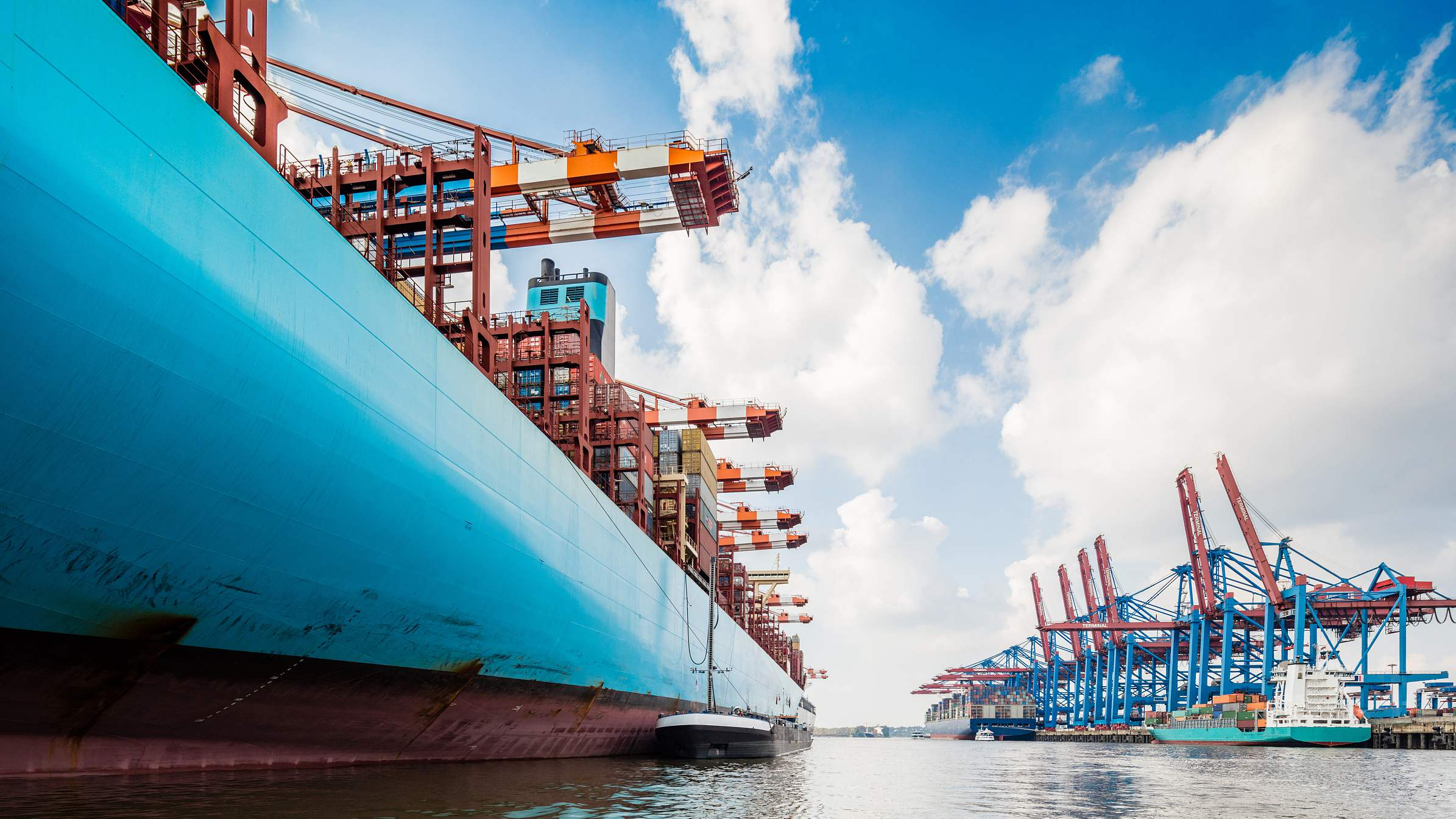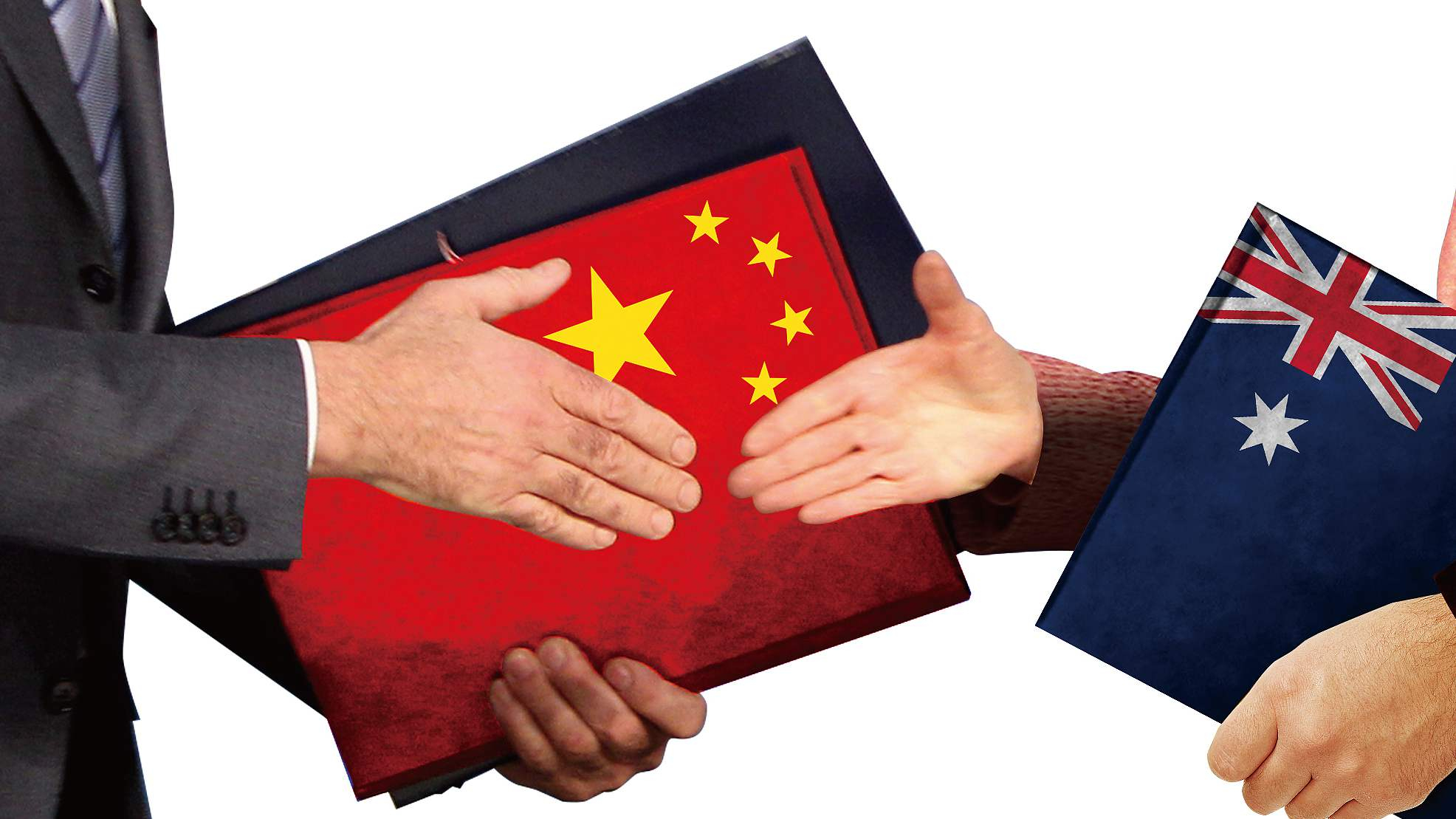
Business
16:59, 08-Aug-2018
Why solid Chinese trade data could actually be a lid on the yuan
Updated
16:59, 11-Aug-2018
By Jimmy Zhu

Editor's note: Jimmy Zhu is Chief Strategist at Fullerton Markets. The article reflects the author’s opinion, and not necessarily the views of CGTN.
Growth in both Chinese exports and imports in July beat earlier estimations, and this set of trade data did not provide many visible clues on how US-China trade tensions would change the outlook for trade. However, strong imports data suggest the Chinese yuan may stay soft in the coming months.
Solid China trade data would normally offer some support to the yuan, but that may not be the case this time. Put simply, increasing Chinese imports mean China is buying more raw materials. As China is the world’s largest commodities buyer, any increase or decrease in its purchase of commodities would easily influence global prices.

Imported food supermarket in Qingdao, China. /VCG Photo
Imported food supermarket in Qingdao, China. /VCG Photo
The Bloomberg Commodity Index and growth in Chinese imports have moved in tandem in the past five years. If Chinese imports continue to grow at their current pace, higher commodity prices will further lift US inflation, forcing the Fed to continue hiking its benchmark interest rate.
The policy divergence between the Fed and the People’s Bank of China is one of the main reasons behind the yuan’s current weakness. As long as the Fed remains in its ongoing cycle of tightening and stays more hawkish than most other central banks, the US dollar’s downside may be limited.
On the other hand, Chinese exports to the European Union moderated to 9.4 percent year-on-year, down from 10.4 percent in June, suggesting demand in the region isn’t really improving.

Mario Draghi, president of the European Central Bank (ECB), addresses a press conference in Frankfurt am Main, western Germany, January 25, 2018. /VCG Photo
Mario Draghi, president of the European Central Bank (ECB), addresses a press conference in Frankfurt am Main, western Germany, January 25, 2018. /VCG Photo
Eurozone inflation recently accelerated further above the European Central Bank’s two percent goal, but the most recent figures for Chinese exports to the EU show higher inflation in the Eurozone was largely driven by higher energy prices, instead of real demand.
With underlying price pressures still muted, ECB chief Mario Draghi is not expected to adjust monetary policy anytime soon, reducing the possibility of a euro rally. The daily correlation between the EUR/USD and CNY/USD has stood at 0.869 in the past 12 months, meaning the yuan’s upside has been limited without a strong euro/dollar rate.
Imports from Australia at fastest pace in 13 months, hinting at pickup in infrastructure growth
In July, imports from Australia accelerated while China’s manufacturing PMI slowed for a second month, signaling that more pro-growth policy measures may start to arrive, including fiscal stimuli such as infrastructure activity.
Imports from Australia surged to 33.7 percent year-on-year in July, well up from 12.0 percent in June, marking the highest period of growth since June 2017. China has been Australia’s largest overseas market for iron ore for many years, with iron ore used for construction and making up almost half of Australia’s total shipments to the Asian country in recent years.

China's imports from Australia accelerated in July. /VCG Photo
China's imports from Australia accelerated in July. /VCG Photo
Correlation analysis showed Chinese imports from Australia and the nation’s industrial production growth at 0.62 in past 10 years. This means that the rally of imports from Australia is a great indicator that Chinese manufacturing activities may have picked up.
China’s demand for natural resources may also explain the correlation between its imports from Australia and Chinese property investment. Growth in Chinese property investment has been falling since early 2017, dropping by 4.6 percent in June.
If historical data is a reliable guide, increasing imports from Australia could mean that investment activities may follow up as well. Import growth from Australia rose to 103.2 percent year on year at the end of 2009, up from -36.8 percent at the beginning of that year, while Chinese property investment surged during the same period. Similar patterns also emerged during the first halves of 2013 and 2016.
Slight slowdown in Chinese exports to US in line with US economic data, trade tensions not yet reflected in data
China’s exports to the US grew 12.2 percent year-on-year in July, down slightly from 12.5 percent in June. Exports to the world’s largest economy remained stable last month, showing that the escalation in trade tensions between the world’s two largest economies has had a limited impact on the real economy for now.
Hence, a slight slowdown in China’s outbound shipments to the US reflects a slight moderation in US economic activity last month. This can be seen in Washington’s economic data as well.
The US ISM Manufacturing PMI dropped to 58.1 in July from 60.2 in the previous month, a 2.1 fall that was the biggest dip in two years. Nonfarm payrolls grew 157,000 in July, the slowest pace in four months.

BYD Coach and Bus factory in Lancaster, California, US. /VCG Photo
BYD Coach and Bus factory in Lancaster, California, US. /VCG Photo
Looking forward, the outlook of exports to the US in the second half remains challenging. The US will begin imposing 25 percent duties on an additional 16 billion US dollars’ worth of Chinese imports from August 23, possibly with more to come.
Furthermore, Chinese authorities appear to have rising concerns about the depreciation of the yuan, after recent measures were implemented to support the currency.
Lastly, front-loading of exports in earlier months may start to bite. External trade policy uncertainties and a potential slower pace of currency depreciation may continue to weigh on Chinese exporters’ outlook into the second half of the year.

SITEMAP
Copyright © 2018 CGTN. Beijing ICP prepared NO.16065310-3
Copyright © 2018 CGTN. Beijing ICP prepared NO.16065310-3